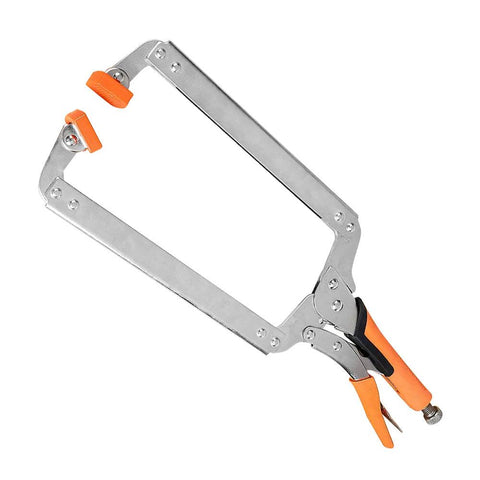|
|
| Mastering the Art of Clamp Selection: A Comprehensive Guide to Choosing the Right Tool |
|
 |
|
 |
|
Choosing the right clamp for a project might seem like a straightforward task, but with the vast array of options available, the decision can quickly become overwhelming. Whether you're a DIY enthusiast or a professional in carpentry, metalwork, or automotive repair, understanding the nuances of clamp selection can significantly impact the quality and efficiency of your work. A well-chosen clamp provides the stability, precision, and safety needed to hold your materials securely in place, allowing you to focus on the task at hand. |
|
| The first step in selecting the right clamp is understanding the nature of your project. Clamps come in various sizes, designs, and strengths, each tailored for specific applications. For instance, woodworking often requires clamps with broader jaws and larger openings to accommodate wide planks or boards, while metalworking may necessitate stronger, heat-resistant clamps to handle high temperatures during welding or cutting. Identifying the type of material you're working with is essential in determining the level of force and stability your clamp will need to provide. |
|
| The nature of the task itself also plays a significant role in choosing the right clamp. Are you gluing, welding, cutting, or simply holding pieces together for assembly? For gluing projects, parallel-jaw clamps are ideal because they apply even pressure across the entire surface, ensuring a seamless bond without creating gaps or uneven joints. If you're welding or working with metals, a locking clamp with a firm grip and heat-resistant materials will provide the necessary strength and stability to hold metal parts securely in place. Meanwhile, if you're assembling furniture or cabinetry, a corner clamp is indispensable for ensuring perfect right angles and flush joints. |
|
| Durability and material construction are other important considerations. Clamps are typically made from materials like steel, cast iron, or aluminum, each offering different levels of strength and longevity. Steel and cast-iron clamps are ideal for heavy-duty tasks due to their robustness, but they can be heavier and more cumbersome to handle. For lighter or more frequent tasks, aluminum clamps offer a good balance of strength and ease of use, especially in situations where portability is a factor. |
|
| The clamping mechanism itself is another point to keep in mind. Some clamps use screw mechanisms to gradually increase pressure, allowing for precise control over how tightly they hold your workpiece. Others, like quick-release clamps, operate with a lever mechanism that can instantly apply or release pressure, making them highly convenient for repetitive tasks or for situations where speed is critical. Additionally, the type of handle or grip on a clamp can affect your comfort and control, particularly during long projects. Look for clamps with ergonomically designed handles or padded grips to reduce hand fatigue and ensure better torque control. |
|
| Another common use of C-clamps in woodworking is during finishing tasks such as sanding or planing. When smoothing out surfaces, it is essential that the workpiece remains steady to avoid uneven pressure that can result in dips or grooves in the wood. By securing the wood to a stable surface with C-clamps, the woodworker can focus on evenly sanding or planing the material without the distraction of trying to hold it in place. This ensures a smooth, consistent finish, which is critical for both the aesthetic and functional quality of the final piece. |
|
| Lastly, think about the versatility of the clamp. Can it be adjusted for different tasks, or is it designed for a very specific application? Versatile clamps, such as pipe clamps or F-clamps, allow you to adapt to various sizes and tasks, making them a great addition to any toolkit. Specialized clamps, like toggle clamps or sash clamps, might not be as adaptable but offer superior performance in their niche applications. |
|
| Ultimately, selecting the right clamp boils down to balancing the specific demands of your project with the features and capabilities of the clamp. Consider the material, size, task requirements, durability, and ease of use before making your decision. Investing in the right clamp not only improves the quality of your work but also enhances safety, preventing slippage or shifting that could lead to injury or costly mistakes. |
|
| Understanding these factors will ensure that you choose a clamp that fits both your needs and your work environment, allowing you to tackle any project with confidence and precision. Whether you're gluing delicate wooden pieces or welding heavy steel beams, the right clamp is an indispensable tool that will elevate your craftsmanship and help you achieve professional results every time. |
|
| |
|
|
|





